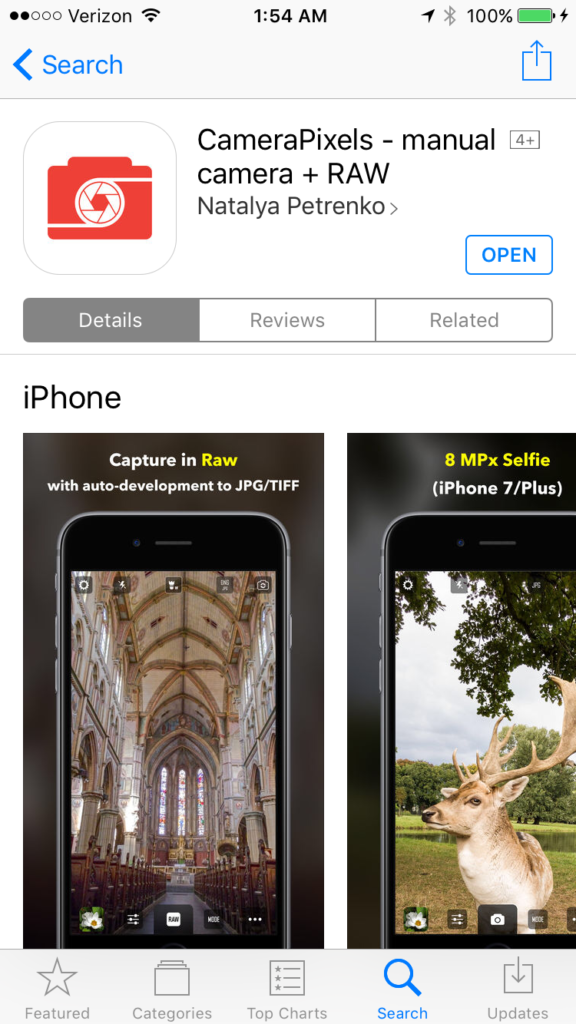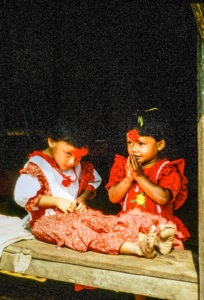Anyone who reads “To Travel Hopefully” at least occasionally knows that I’m a major lover of street fairs and festivals. Nowhere else can you capture the colors, sounds, flavors, and feel of a city’s local culture as readily. I’m fortunate to live in the San Francisco Bay Area, where there are literally hundreds of diverse and fascinating festivals each year. Probably my favorite of all is the annual Carnaval celebration, a pan-Latin outpouring of samba dancing, music, color, culture, and even cars. Anyone in San Francisco can tell you that Carnaval here takes place in late May, thanks to the rather chilly weather that prevails during the more traditional carnival season around Mardi Gras in February. But Carnaval SF has a lesser-known cousin, Mardi Gras SF, that does indeed take place at the same time Mardi Gras is celebrated in New Orleans, Rio de Janeiro, Martinique, and other places around the world. Today’s post focuses on yesterday’s Mardi Gras celebrations all around the city of San Francisco, during which the music, traditions, costumes, and dancing of the world’s more famous carnivals comes to California for one crazy night.
 New Orleans style mummers dance along with the dixieland music in a parade in San Francisco’s Hayes Valley neighborhood. I wanted to capture a sense of the chaos even while making a portrait of just these two revelers, so I used a shallow depth-of-field to throw the closer woman into slightly softer focus. Buy this photo
New Orleans style mummers dance along with the dixieland music in a parade in San Francisco’s Hayes Valley neighborhood. I wanted to capture a sense of the chaos even while making a portrait of just these two revelers, so I used a shallow depth-of-field to throw the closer woman into slightly softer focus. Buy this photo
 At this time of day there was enough natural light remaining to make this portrait without any fill flash. During post-processing in the Lightroom application, I adjusted the contrast and exposure, enhanced the vibrance, and used just a touch of post-crop vignetting to bring out the main subject. Buy this photo
At this time of day there was enough natural light remaining to make this portrait without any fill flash. During post-processing in the Lightroom application, I adjusted the contrast and exposure, enhanced the vibrance, and used just a touch of post-crop vignetting to bring out the main subject. Buy this photo
 The classic Victorian townhouses known as “painted ladies” attest that this scene is taking place in San Francisco, but the foreground subject is pure French Quarter. To gain this perspective on the scene, I climbed on top of a bench and used a wide-angle lens. I was careful to keep the camera level so as not to distort the image, and I further corrected the perspective during post-processing. Buy this photo
The classic Victorian townhouses known as “painted ladies” attest that this scene is taking place in San Francisco, but the foreground subject is pure French Quarter. To gain this perspective on the scene, I climbed on top of a bench and used a wide-angle lens. I was careful to keep the camera level so as not to distort the image, and I further corrected the perspective during post-processing. Buy this photo
 I rushed across town to the Mission District, an historically Latino neighborhood, where a different sort of parade was beginning. This parade is styled as much on the Latin American carnival traditions as on the New Orleans creole traditions. This portrait documenting the preparations of one of my favorite Carnaval groups, Viva la Diva, was made as the parade was forming. I used an off-camera fill flash with its power dialed down by one stop to saturate the colors and set off the main subject from the background. Buy this photo
I rushed across town to the Mission District, an historically Latino neighborhood, where a different sort of parade was beginning. This parade is styled as much on the Latin American carnival traditions as on the New Orleans creole traditions. This portrait documenting the preparations of one of my favorite Carnaval groups, Viva la Diva, was made as the parade was forming. I used an off-camera fill flash with its power dialed down by one stop to saturate the colors and set off the main subject from the background. Buy this photo
 I loved this reveler’s carnival mask, so I asked her if I could make a portrait. I used a classic 85mm portrait lens and got in close to minimize clutter in the background, using a bit of off-camera fill flash. Buy this photo
I loved this reveler’s carnival mask, so I asked her if I could make a portrait. I used a classic 85mm portrait lens and got in close to minimize clutter in the background, using a bit of off-camera fill flash. Buy this photo
 Another example of a portrait shot close to the subject using a touch of fill flash. I use an effective and inexpensive cord to tether my speedlight to the camera’s hot-shoe, while I hand-hold the flash off to the side and away from the camera. To learn more about this gear and technique, read this earlier post: Post on Off-Camera Flash. Buy this photo
Another example of a portrait shot close to the subject using a touch of fill flash. I use an effective and inexpensive cord to tether my speedlight to the camera’s hot-shoe, while I hand-hold the flash off to the side and away from the camera. To learn more about this gear and technique, read this earlier post: Post on Off-Camera Flash. Buy this photo
 I have been working with the group Viva la Diva for several weeks already to document their preparations for San Francisco’s big Carnaval parade in late May, so I made certain to capture these lovely ladies during the smaller Mardi Gras celebrations. Once again, the secrets to making a stunning portrait are to establish rapport with your subject, use a moderate and fast portrait lens, get in close, use a wide aperture to throw the background into soft focus, throw in a touch of fill flash to isolate your subject even more, and shoot several frames to ensure you capture just the right moment. It takes practice, but it really isn’t that difficult, and the results are truly eye-catching. Buy this photo
I have been working with the group Viva la Diva for several weeks already to document their preparations for San Francisco’s big Carnaval parade in late May, so I made certain to capture these lovely ladies during the smaller Mardi Gras celebrations. Once again, the secrets to making a stunning portrait are to establish rapport with your subject, use a moderate and fast portrait lens, get in close, use a wide aperture to throw the background into soft focus, throw in a touch of fill flash to isolate your subject even more, and shoot several frames to ensure you capture just the right moment. It takes practice, but it really isn’t that difficult, and the results are truly eye-catching. Buy this photo
 Kids are great fun to photograph. This group of youngsters from a nearby school wanted to dance with the Viva la Diva samba dancers. I got down low so as to shoot them from their eye level, and I held the flash up high so as to light them evenly and without harsh shadows. Buy this photo
Kids are great fun to photograph. This group of youngsters from a nearby school wanted to dance with the Viva la Diva samba dancers. I got down low so as to shoot them from their eye level, and I held the flash up high so as to light them evenly and without harsh shadows. Buy this photo
 Viva la Diva! Even though by this time of the evening there was effectively no ambient light, I was still able to capture a portrait of the Divas without the glaring artificial color cast that is typical with images lit mostly by flash. The keys to success here are to use a diffuser on the flash head, get the flash off-camera, hold it very close to your subject to soften the lighting further, and adjust in post-processing. Buy this photo
Viva la Diva! Even though by this time of the evening there was effectively no ambient light, I was still able to capture a portrait of the Divas without the glaring artificial color cast that is typical with images lit mostly by flash. The keys to success here are to use a diffuser on the flash head, get the flash off-camera, hold it very close to your subject to soften the lighting further, and adjust in post-processing. Buy this photo
Do you have favorite local events you love to shoot? Which ones, and what techniques do you use? Please share your stories here.
Want to read more posts about what to shoot while traveling or close to home? Find them all here: Posts on What to Shoot.


















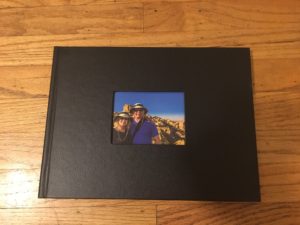
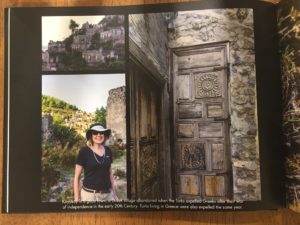
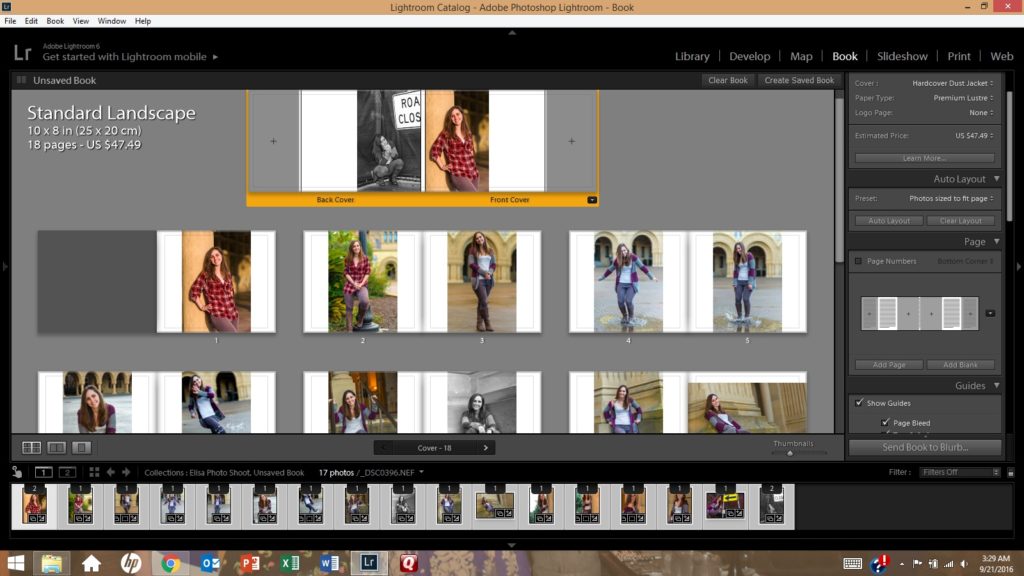 The process of creating a photo book using Lightroom’s Book module (shown here) is fairly straightforward. It’s even more intuitive using an online service such as Snapfish or Shutterfly.
The process of creating a photo book using Lightroom’s Book module (shown here) is fairly straightforward. It’s even more intuitive using an online service such as Snapfish or Shutterfly.
